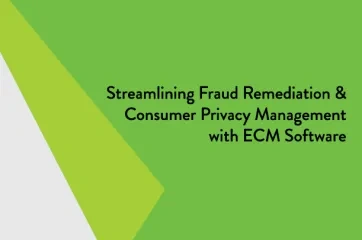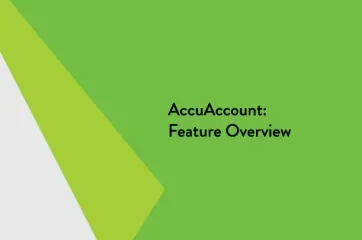Exception management is the process of monitoring missing documents or other important information. For banks and credit unions, the bulk of exception management is focused on keeping loan files in proper order. Efficient loan exception management involves devising a system of identifying information that should be in a loan file and then tracking, reporting on, and resolving absent items.
Managing the Particulars of Exception Management
Let’s examine the topic of exception management by considering the following “Ws”:
What needs to be tracked? What does the financial institution expect to see in a file that is not there? The difference between what exists and what is expected is an exception—and that’s what needs to be tracked.
Who is responsible? Someone must first understand there is an exception and then decide who will acquire the document from the customer or member. The chain of responsibility can be viewed hierarchically:
- At the top level is a senior compliance and/or lending executive that oversees the program in general
- A loan department tracks and reports missing items
- The lender, lending assistant, or loan administrator usually obtains documents by contacting customers and members
When is the item needed? Timing depends on the document. Is the document only placed in the file once, or will updated versions be required on an ongoing basis? A title policy or recorded deed of trust might be a one-time exception in the loan file, but financial statements for commercial loans will likely be required annually.
Why is exception management important? Financial institutions proactively track and resolve exceptions to ensure ongoing compliance and mitigate risk. Here are a few reasons why:
- Failing to perfect a loan leaves no recourse to collect collateral if it defaults
- Not tracking a homeowner’s insurance payment could result in a loss for the bank or credit union in the case of a fire
- A borrower’s failure to pay taxes on real estate could lead to difficulty with public trustees or treasurers
Exception Management & Customer/Member Service
Exception management is not only important for a bank or credit union’s compliance and safety/soundness. It also helps the financial institution deliver a higher level of customer or member service. Developing a scalable exception management process helps banks and credit unions avoid undesirable situations, such as:
- Making unnecessary requests for the same document from multiple departments or users
- Requesting items at inappropriate times
- Overwhelming customers or members with too many requests
Third-Party Exception Management Solutions
Financial institutions can use core-integrated tracking systems, such as AccuAccount, to effectively address their exception management and compliance concerns. Exception management software can also streamline audits and exams by memorializing good faith efforts to resolve exceptions. Notes can be entered directly into a file (i.e., phone call dates and times), and customer or member notices can be scanned into the system.
AccuAccount also clears exceptions as they are scanned, saving time and reducing the potential for oversights. Exceptions can be viewed and managed from a customer or member perspective, which brings transparency to items currently missing and those soon to expire—creating efficiencies for both the financial institution and the account holder.
Exception Management Resources
Looking for more information about exception management and reporting at banks and credit unions? Check out our resource library for helpful whitepapers and spreadsheets that your institution can use to simplify exception management.
Browse our banking definitions page for more terminology.














